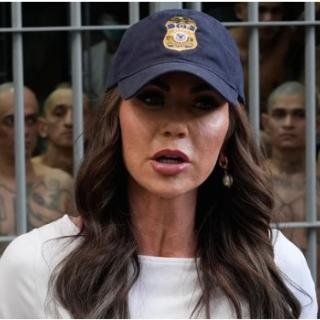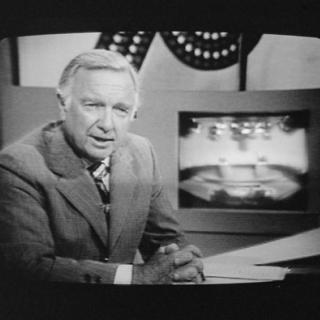Advertisement
Just as City Council works against public safety and the Columbus Police—reducing the force, under-funding, spouting slogans instead of policy, and refusing to conduct serious gun buy-back programs; the natural environment by approving oversized developments; the public schools by tax abatements and worse; and the city’s publics in general, on Monday, Oct. 25, 2022 council acted out against art in the little city that can’t.
Like the Columbus Dispatch and OSU’s president, it is often too easy to caricature Columbus’ City Council and the mayor, “Mr. Opportunity—for some.” It is hard to parody self-parody, but we must persist. The fate of Columbus’ ever-slight democracy depends on it.
With no debate but unblushing exhortations purportedly about cities, art, economics, and whatever doesn’t fit--free of knowledge, understanding, or meaningful context, City Council approved $250,000 to “create its first-ever ‘Public Art Master Plan,’ for the development, improvement and enhancement of public art and cultural arts programs in the community.”
As usual, confusion and chaos reign. There is no awareness that “public art” in particular, as well as “development, improvement and enhancement” demand definitions and debate. All have multiple, sometimes conflicting meanings. No “first-ever ‘Public Art Master Plan’” can be “created”—do they mean researched and written or spontaneous regeneration? Language, knowledge, and logic all matter.
A step further: a “plan… created by the nonprofit,” self-appointed and self-reproducing local grants-for-individual artists, Greater Columbus Arts Council (GCAC) ‘to set a vision and develop a clear set of community-informed goals, policies and objectives to provide guidance” is not a “master plan.” It is a wish-list or a set of aspirations. Look it up. Compare this wording to real cities’ actions. Nowhere is it clear that the GCAC itself is well-prepared to undertake the tasks assigned to me by City Council’s action.
“The money will come out of the city’s Neighborhood and Economic Development Fund.” Why? Why not either a general fund or parks and recreation? What unspecified assumptions, quite likely faulty assumptions, about the indirect relationships between public art and any form of “economic development” are implied here? “Economic development” as well as “public art” demand definition. They are not self-evident except in misleading slogan spinning. This matters.
The boosterish city promotion continues by Tom Katzenmeyer, president and CEO of the GCAC—the recipient of the funding--asserting that “of the 14th-largest cities in the country Columbus is the only one without a master plan to guide public and private investment in public art.”
Checking shows that statement to be false. All 13 larger cities do not have master plans. Of course, he never pauses to distinguish one kind of “plan” from another. That would only get in the way.
Katzenmeyer also inserts his own self-promotional sloganeering that bears little relationship to anyone’s realities: “Investment in public art both inspires and engages us…” How does “investment… inspires and engages us”? Is that what he means?
Am I unfair to request a translation into definable terms and every day, let alone aggregate evidence? This is boosterism much more for his own GCAC’s non-profit profiteering in the excessive amount of $250,000. That approved sum far exceeds the services sought in the proposal. Who is “non”-profiting?
Without pausing to clear his throat and certainly without reflections, he next leaps miles and miles to “As a consequence [of not having a “master plan”] we are underfunding our public arts, and up ’til now have had no intentional strategy for equity and representation.” “Having a plan” by itself leads nowhere: not necessarily to an “intentional strategy for equity and representation.”
But the self-serving GCAC, which receives an excessive grant for how the project is defined, pales in comparison with the sponsoring city council members.
Proposer Nicholas Bankston, chair of the Economic Development—not Arts—Committee gushes in a geography- and fact-free blush: “Art is an invaluable part of the city’s unique culture, our history, identity and our economy, so it is imperative that we have a comprehensive city developed plan.”
Ignoring that he is funding an external consultant’s plan, not one that is “city developed,” the native Columbus Bankston also neglects the powerful and unmissable fact that Columbus has no “unique culture;” documented, written, and agreed-upon history; and certainly no identity. Equally importantly, “art”—however defined—does not and cannot does not have that power. What “art”? What part? What “unique culture”, history, identity? He cannot tell us. Does he not know that there is no such thing?
These fallacies come into focus in Bankston’s further words, and in Councilor Lourdes de Padilla’s and Emmanuel Remy’s briefer bursts. Let’s let Bankston wrap up his piece until the world-renown space-wrapping artists Christo and Jean-Claude come to the little city of cement, not public art (see below).
He urges: “I just have one recommendation: Just make sure we keep the deer on the riverfront.” Please Councilor, can you tell us what “unique culture, our history, identity,” that lonely non-Columbus small sculpture signifies?
Incredibly, de Padilla fantasizes, art “transcends language, it helps us feel things, it brings community together and it helps people think.” Now anyone who has completed a first year university course in art or anthropology knows that that is nonsense. Art under specific conditions and in particular contexts may or may not do something that like. But as a generalization, it fails deeply.
Councilor, ponder the City’s inability to come to terms—unlike many other US cities—with its long warehoused and divisive statue of Christopher Columbus. Is she unaware that in July, her own Council indefinitely tabled a proposal to expend an outrageous $253,000 for another consultant’s comments on the sculpture in hiding?
Does “art bring community together”? Not Columbus; not statues of Confederate generals or slaves working the fields? And on and on.
Finally, Ramy even more credulously states, “We are big city now, and having a cemented (art) plan for this city moving forward now, we’re super excited about that.” I hesitate to ask: is he referring to “downtown’s” increasing expanse of cemented, unattractive parking lots, none of which accept the city’s overpriced public parking app? Does he know?
No doubt, none of them has read my recent essay “Why won’t Columbus, Ohio, grow up? (Busting Myths, Columbus Free Press, Oct. 22, 2022) And what, I end by asking, is “cemented (art)”: a platform on which either Bankston’s pet deer or Christopher Columbus may sit? Or does he mean paving over the Scioto River and the Metro Parks?
None of them know that words and facts matter. Why is that?
I am embarrassed for all of Columbus, which not incidentally, does not have a single building of architectural distinction by a noted architect. Of course, that is not mentioned in Michael Coleman’s “Downtown” fantasy plan recently endorsed by City Council.
This public defacing of imaginary “public art” takes my breath away. If we can’t send Council to see Toronto or even Cleveland or Cincinnati, perhaps to first-year art and anthropology courses, free at Columbus State if they attended Columbus Public Schools.
-----------------------------------
Harvey J. Graff is Professor Emeritus of English and History at The Ohio State University and inaugural Ohio Eminent Scholar in Literacy Studies. Author of many books, he writes about a variety of contemporary and historical topics for Times Higher Education, Inside Higher Education, Academe Blog, Washington Monthly, Publishers Weekly, Against the Current; Columbus Free Press, and newspapers. Searching for Literacy: The Social and Intellectual Origins of Literacy Studies was published by Palgrave Macmillan in August. My Life with Literacy: The Continuing Education of a Historian. The Intersections of the Personal, the Political, the Academic, and Place is forthcoming.



